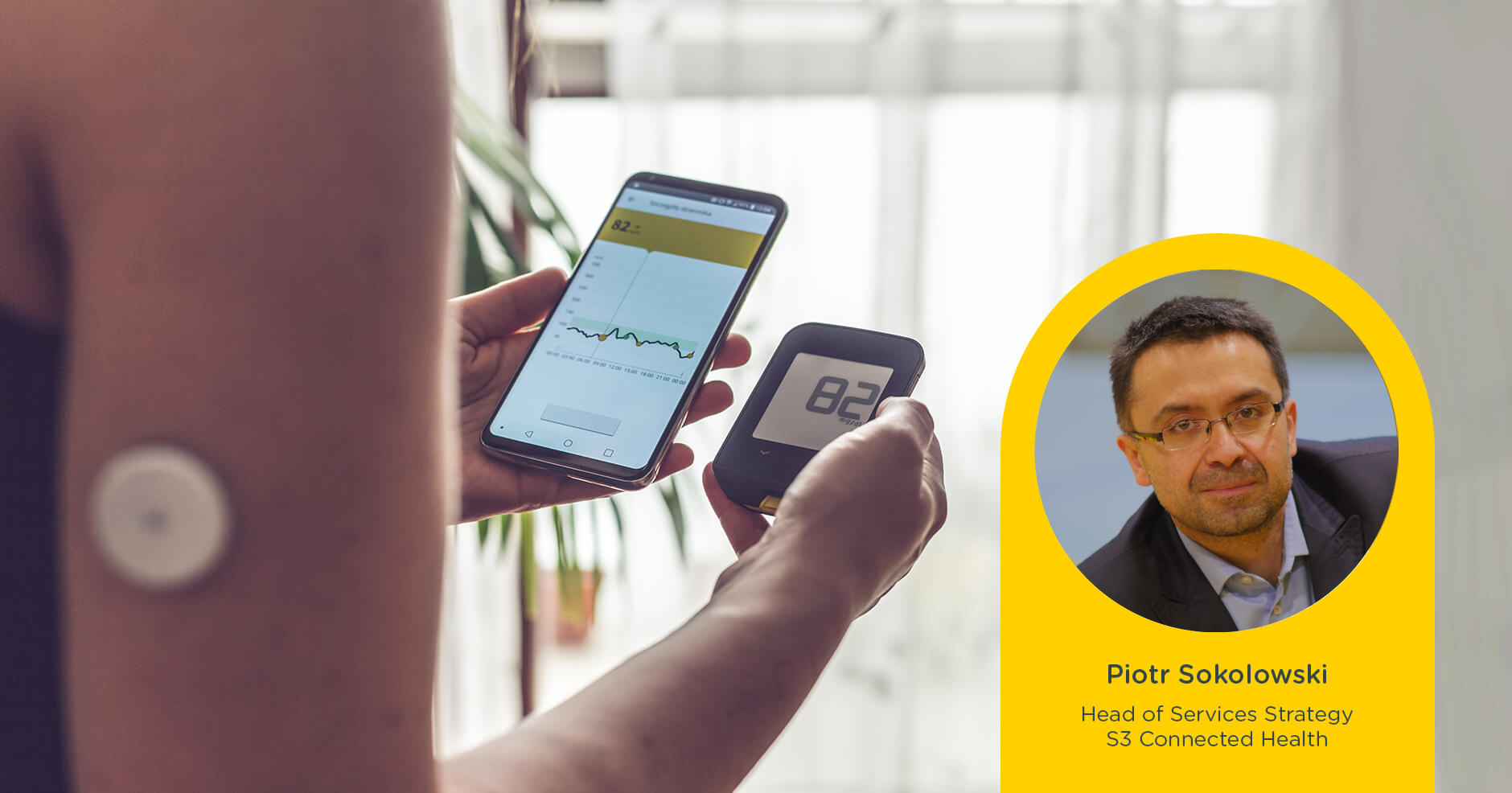Digital technologies have been transforming medical care for years, but external pressures – not least the health and cost implications of an ageing population – have sped this evolution into a revolution. At the same time, better access and more openness to tech, as well as a preference for remote treatment, are making a shift to value-based care possible.
Of the estimated 50 billion medical devices that will connect clinicians, health systems, and patients in the next decade, many will be part of ‘therapy improvement services’ – solutions that use data to better the lives of people managing acute and chronic conditions.
With the backdrop of the COVID-19 pandemic proving to health services just how much care can be delivered remotely, we delved into the topic as part of our latest whitepaper on Unlocking Medtech’s Future Potential. Read on to find out more about how these devices can improve patient care.
What exactly is a therapy improvement service?
Therapy improvement services are solutions that influence therapy outcomes drivers. One of the most important drivers is adherence to therapy. According to the World Health Organisation: “Poor adherence to long-term therapies severely compromises the effectiveness of treatment making this a critical issue in population health both from the perspective of quality of life and of health economics”. There are several other drivers that impact the outcomes as well: patient awareness and ability to self-manage their conditions, good communication between patients and their care teams and obviously the performance of the device delivering the therapy. Therapy improvement services use data from connected devices as well as other patient data to drive better outcomes and patients’ Quality of Life.
Why are they important?
Put simply, therapy improvement services are invaluable in supporting therapies especially those delivered at home. Therapies rely on device performance for success – but they also depend on individual patient behaviors, abilities, and restraints.
Therapy improvement services address both sides of the coin – assuring optimal device performance in real-life settings, whether at-home or on-the-go, while also monitoring and influencing patient behavior. Connectivity means device settings can be tweaked and software can be upgraded from remote service center, while data from patients enable highly-personalized care and advice to help them maintain a healthy lifestyle and manage their long-term conditions
These services make a real difference to patient outcomes and quality of life on an individual level, but the benefits are even more significant across a broader population: increased accessibility means health services can reach and care for more patients, more cost-effectively. They also reduce the likelihood of symptoms suddenly worsening, easing the strain on acute and emergency care services. Portability also means clinical-based therapies can be carried out entirely at home – meaning more comfort for patients, but also an uninterrupted provision of therapy even at times where facilities are unavailable (like the recent arrival of COVID.)
How else can connected medical devices help?
These devices offer connectivity with patients, building engagement and allowing medical staff to combine data from multiple sources and create a complete image of patient lifestyles. That enables a holistic approach to care provision, promoting a healthy lifestyle, taking into account factors like comorbidities and mental health, and ensuring timely refills for medications and consumables.
3 device-based therapies helping patients
The following industry examples show the significant improvements device-based therapies can make to patient quality-of-life:
- Merck Serono’s RebiSmart device is a connected injection device that administers pre-set doses of drugs to combat multiple sclerosis – capturing the date and time of treatment and logging this on the cloud and to a mobile app. The results are significant: 77% of patients were “very satisfied” or “extremely satisfied” with their experience with the device, 82% considered it better than previous methods for tracking their health, and 95% would recommend using the system.
- Cochlear implants restore hearing for those who are deaf – but they require programming, adjustment, and coaching to ensure patients use them correctly. Adding connectivity allows audiologists and speech therapists to understand how patients use the device and provide extra assistance where necessary, especially to patients who may not have access to hearing care locally.
- Abbott’s wearable glucose monitoring system eliminates the need for finger sticks for diabetes patients – promoting increased scanning for glucose levels. Device users who scanned frequently reduce their time in hypoglycemia by 31%.
Whatever the form, medical devices are a critical element of healthcare provision today. They deliver immeasurable value to society by improving, sustaining, and saving people’s lives. But with the arrival of connectivity and around-the-device services, the real-world outcomes from device-based therapies can be brought to a totally new level – meaning better life for more people and lower costs to the healthcare systems.
Piotr Sokołowski
Head of Services Strategy, Connected Health Solutions
S3 Connected Health
To find out more about how connectivity can drive operational efficiencies for your company, download our new whitepaper:
Unlocking Medtech’s Future Potential with Connected Devices and Services


